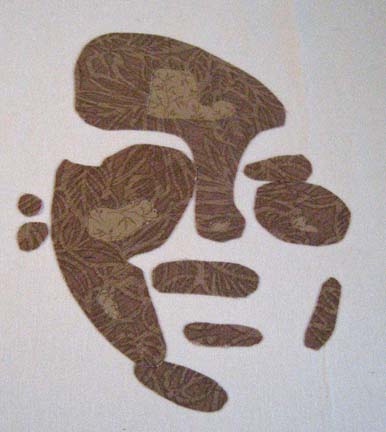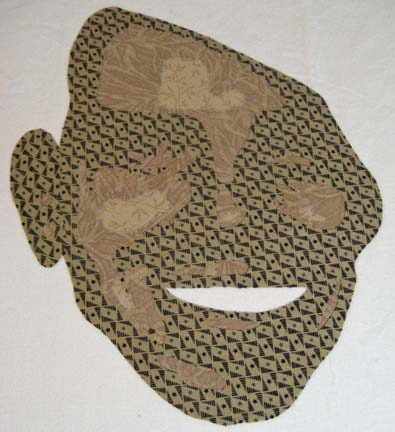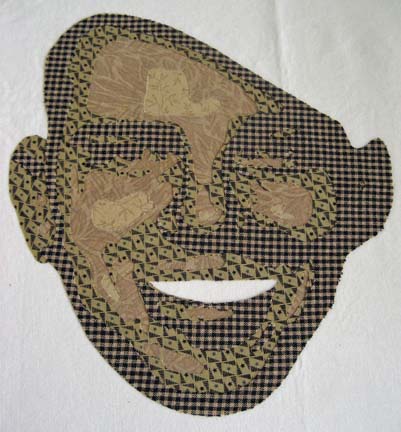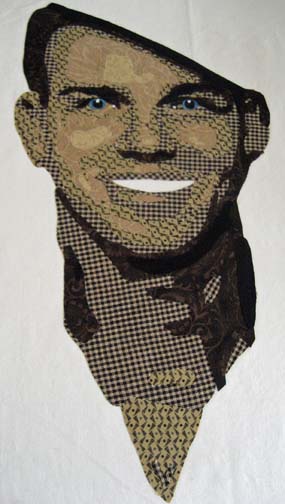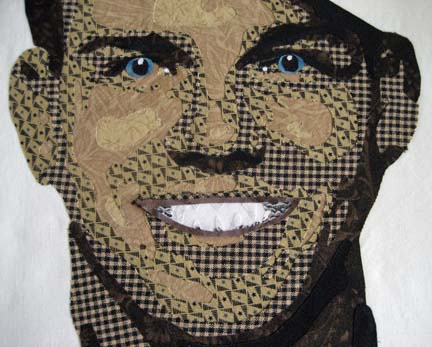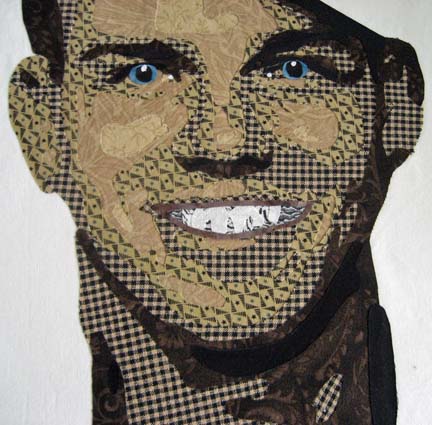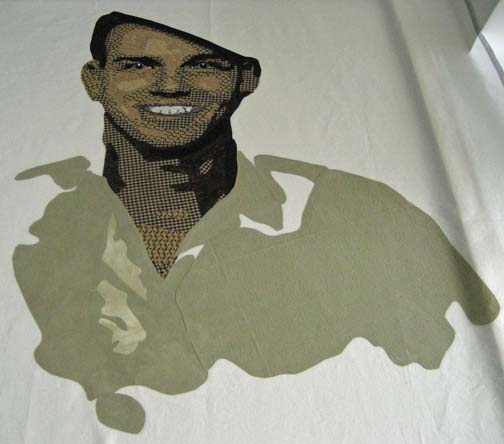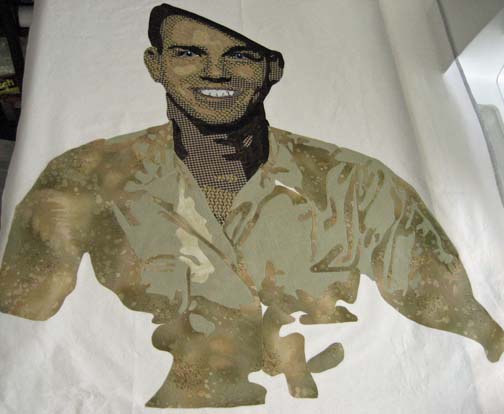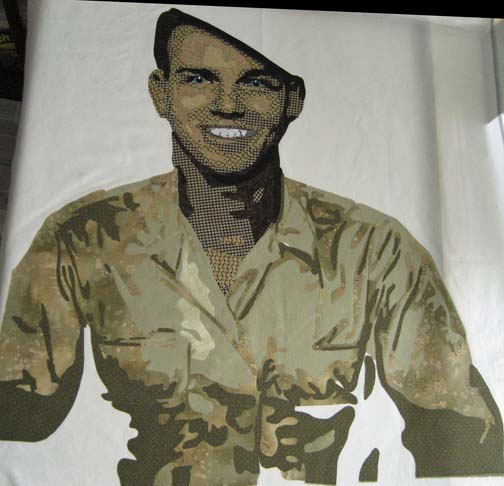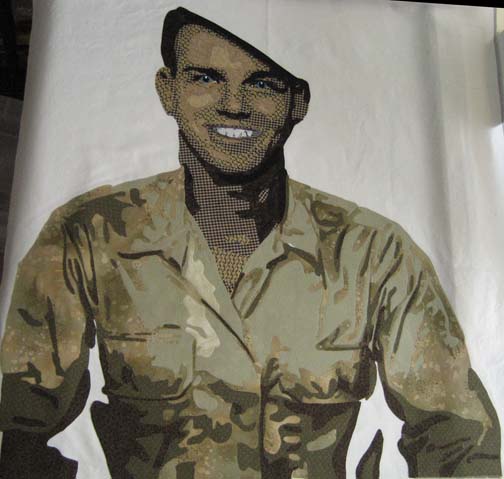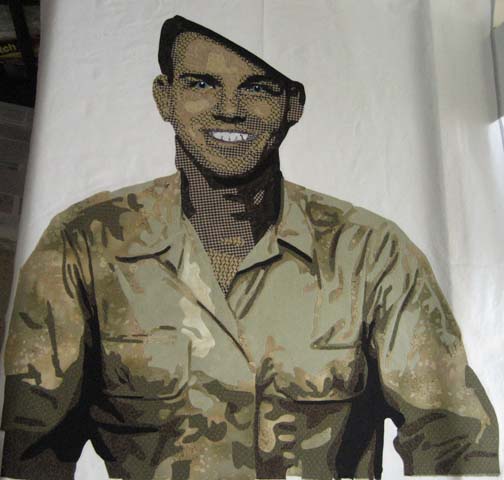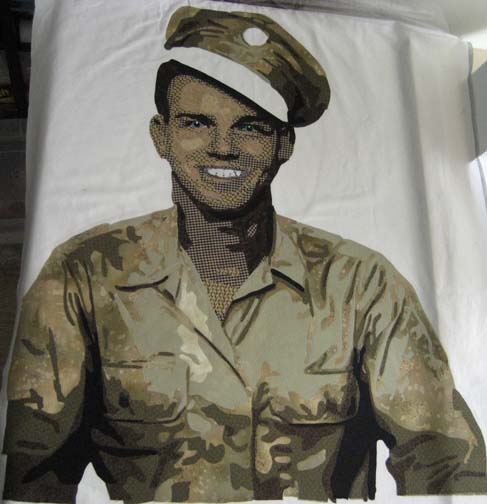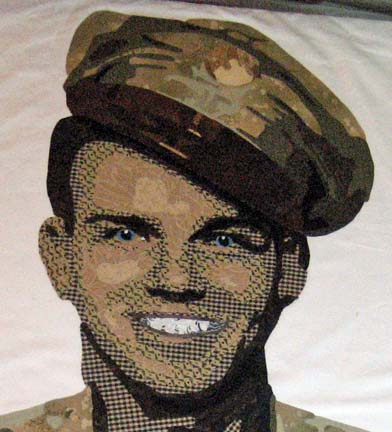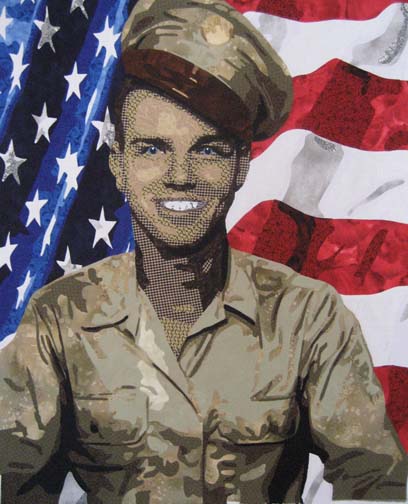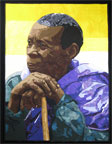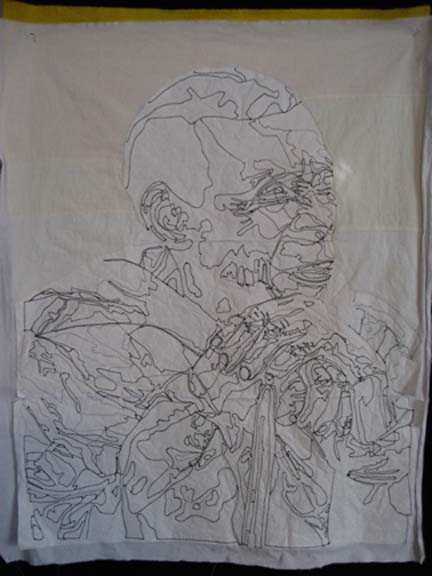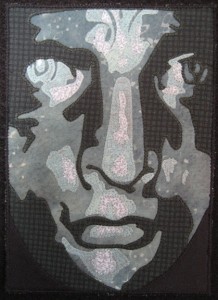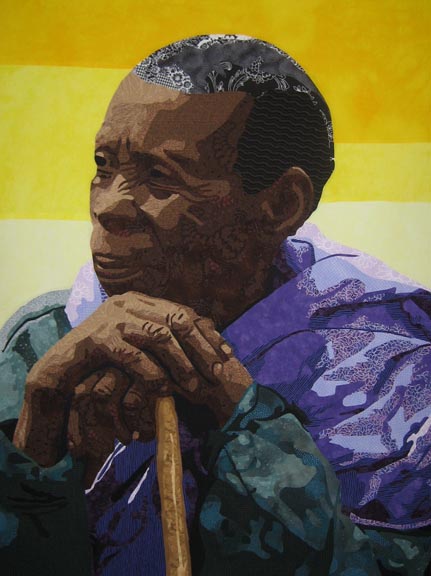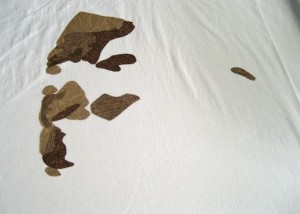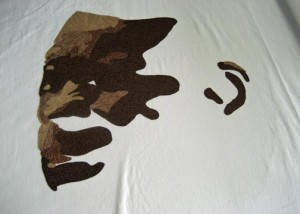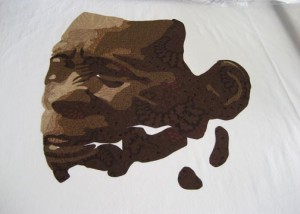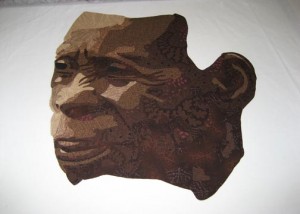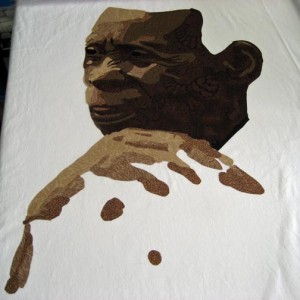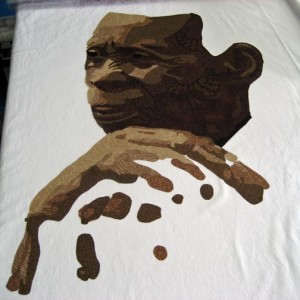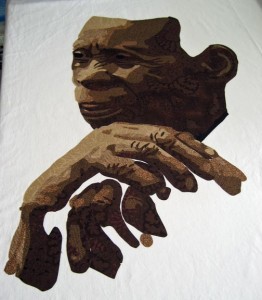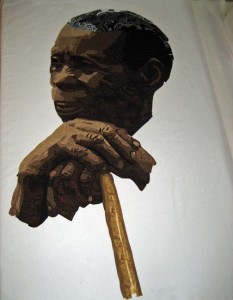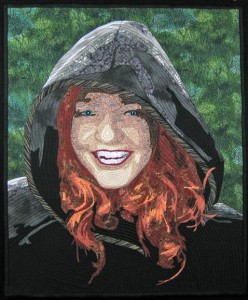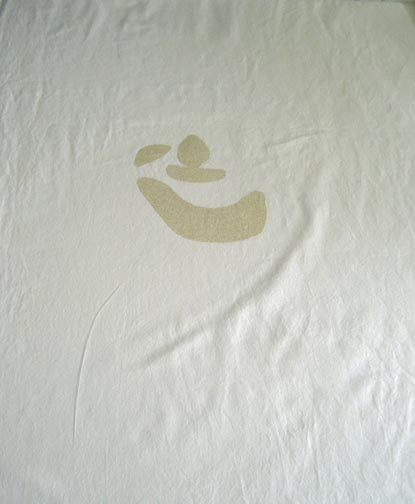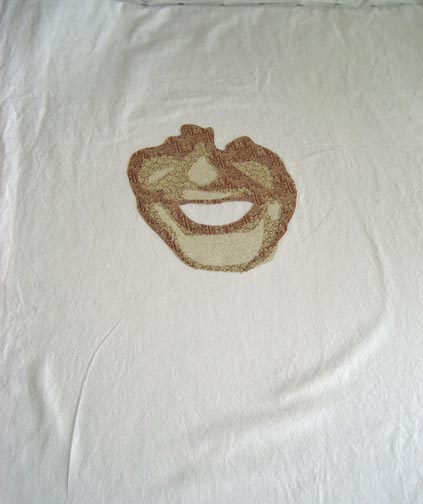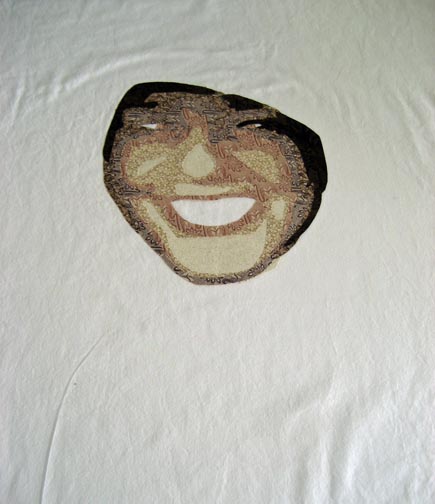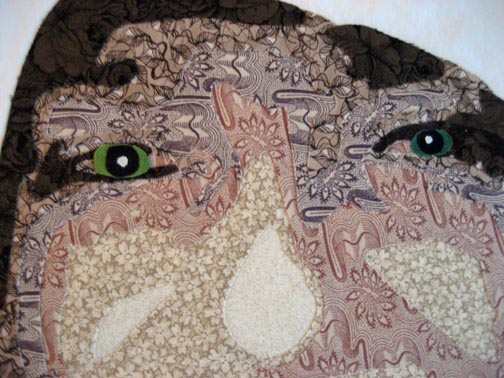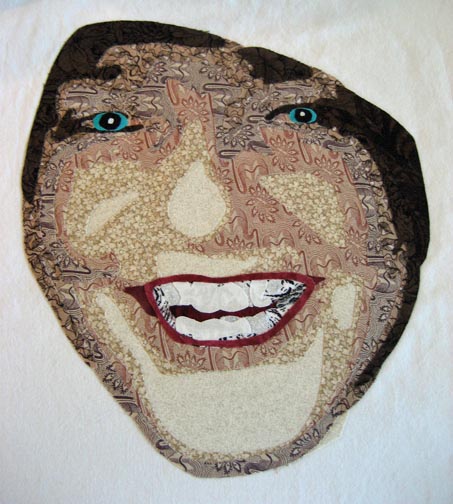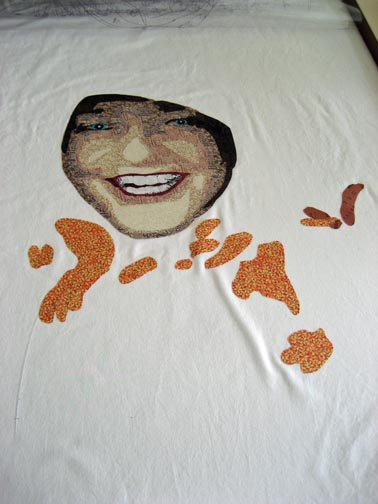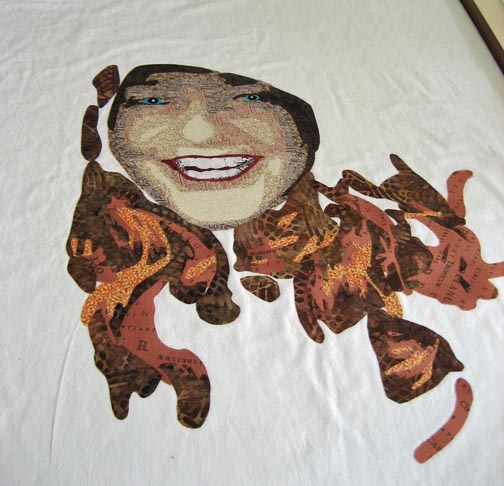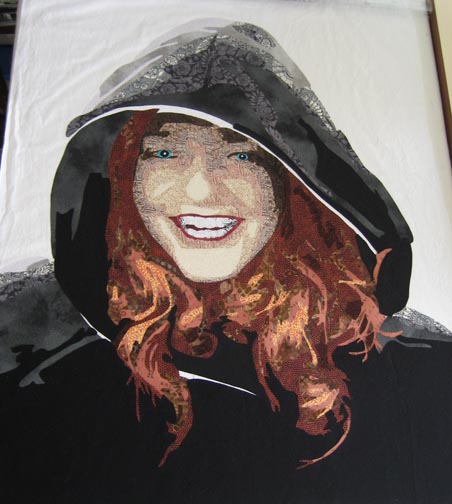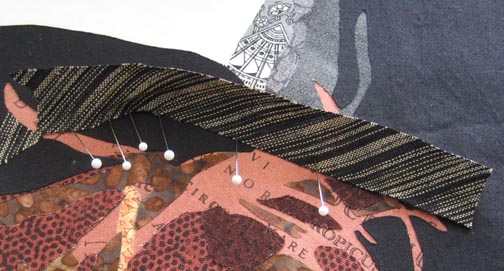Virginia Greaves
(7 comments, 341 posts)
This user hasn't shared any profile information
Home page: http://www.virginiagreaves.com
Posts by Virginia Greaves

Jack
4The Story of Jack
Jack is the nickname of my father-in-law. I still don’t know why someone would use a nickname for John, but it used to be a very popular thing to do. So even though his name was John, he grew up using the name Jack, and when World War II started, he continued on as usual — as Jack.
But one day, Uncle Sam called him in and accused him of trying to impersonate someone else. They made him change all of his paperwork to John — and from then on, everyone called him John.
My husband found a picture of his father recently. It looks like an enlistment photo, taken at the very beginning, when he was eighteen. His hat is propped lightly on his head, askew, and his grin reflects the personality within.
The Face
When I start a face, I always start with the lightest values and work up to the darkest (with the exception of the teeth). It’s always hard to see where I’m going when there are only two values to see.
But when I get to the third and fourth value, the face starts to take shape.
At this point, I realized that I couldn’t do the next value until I went back to do the neck — which I had forgotten.
Once you put on the eyes, you can really start to see handsome shining through.
When I started the teeth, I started with the lightest value and worked my way up to the darkest. I completely forgot that this doesn’t work on the teeth — but it gave me a chance to snap a picture of the teeth done this way so you can see why it doesn’t work. When you’re working with the large shapes of the face, you worry about shadowing of one fabric under another — but the pieces of the teeth are so small & everything is in shades of white, shadowing isn’t really an issue. And worse, if you make the teeth this way, they look harsh — not rounded.
These look much better — and will pop even more when I quilt in the individual teeth.
The Shirt
Although the picture I had was sepia toned, I was fairly certain that the shirt was khaki — which I couldn’t do since I used khaki colors in his face — so I leaned more towards a light military green. The main color, the 2nd value, is one that I had dyed years ago & tossed aside, thinking I would never use it — but it was perfect for this.
The next value outlines the wrinkles in the shirt and shows how the shirt fits him.
The darker values always seem to make it come to life.
The Hat
I had no reference for how the hat should look — and the picture didn’t tell me enough. After Google searching for World War II uniforms, I found a similar hat that surprisingly did not completely match the jacket — or in this case, the shirt. The brim was brown leather, and there was a belt just above the brim of brown leather. So I used the shirt colors for the top of the hat . . . .
. . . . and used a rich brown for the brim and belt (the belt will pop out once it is quilted).
The medallion was another issue. I’m fairly certain it was round metal so I used gold toned fabrics. Hopefully, using a metallic thread around it later will help it pop out more.
The Background
I don’t always know what to do in the background, but in this case, the decision was simple: a waving American flag. I used Photoshop to try out the idea and it was so successful, I knew it would work in fabric. What better tribute for an American soldier?
This is the first time that I’ve made a completely separate design for the background — but it only took me a couple more days.
Now I move into appliqueing and then quilting. Not as exciting as designing the piece, but still needed steps.

Creative Gridlock
0Completion
I have finally completed Bukonyan Elder. I was amazed at how long she took me — but I’ve been very busy the last few months with family obligations. It was tough to get her to a certain level of completion and then watch her unattended on my design wall. You can see her new page here.
So I must be busily working away on my next piece, right? No, unfortunately not.
Creative Gridlock
My last string of pieces all fell into place perfectly. As I was working on one, another inspiration would come to me and I knew exactly where to start when one ended. But I was not so lucky this time. That creative wall has risen up in front of me.
Not having my next piece all ready mapped out has left me feeling a little lost. Not that I haven’t been here before. The question is rather — what do I do from here?
Creative Process as a Means of Moving Forward
And I think that the answer is — a study. Something small — probably not my first choice — but I need to do something rather than sitting here staring at my computer screen. Moving past a creative block means doing something — rather than nothing.

Almost Done
1I’m almost done with Bukonyan Elder. She’s taken me much longer than I expected — but she is quilted now & blocked. I’m waiting for her to dry before I take pictures.
I showed a picture earlier of what the back looked like after all of the applique. I thought you might want to see the back now that it’s been quilted.
The brown thread shows up nicely on the black and white print — but some of the other areas don’t have dark enough thread for you to really see the outline — so I decided to crop out the other areas & only show her face and hands. I like the back. Her life in outline. She looks more like a sketch.
WordPress: From Blog to CMS Part II
2It’s official — my DreamWeaver site is now gone & everything is running on WordPress. It was not as painful as I thought it would be.
From my last post, I made more pages for my work. I still have some work to do — but I had enough of my recent work published that I decided to go live with the update.
I really worried about moving WordPress to the root directory — and I even made a mistake — but it all worked out in the end. I have been learning to use Cyberduck on my Mac for the FTP — and the software restricted me from moving the blog files to the root directory directly through a copy/cut and paste. I had to download them locally and then upload them back to the server in their new location.
There is an article in the WordPress Codex that explains the process — Moving WordPress. Since I was moving it within the site, it was fairly straightforward — except I forgot to change the WordPress Address and Site Address in the Settings panel before I started moving it. I logged into my phpAdmin on my server to change the addresses directly in the wp_options table for siteurl and home — only to find that WordPress had all ready smartly fixed it. It is such intuitive software.
After the upload, I went to my root directory — and there it was. Then I logged into the admin and checked — and everything worked great.
I really expected more problems. I had more problems with a plugin I once put on my site. That was when I had to learn how to go through phpAdmin on my server and work on database values directly — a helpful skill when you can’t access the WordPress interface.
The Codex article tells you to change your Permalinks if you use them — but I found that mine worked fine. Mine were set to www.virginiagreaves.com/blog — but when I set up the Home Page & Blog Page — the blog started posting to www.virginiagreaves.com/blog/blog — so I worried that that would create problems since I didn’t change the Permalinks at that time. But the truth is that WordPress is smart enough to follow what you’re trying to do.
I did have a scary moment when I tried to access pages that I had created of my work. At first, they came up with error messages that they weren’t found. The only path reference I could find was under the settings for a plugin — which I changed. After some minutes of working on it and finding nothing, they starting showing up. It may be that the database on the server was taking a little more time to process requests because of the move.
So that is really all there is to it. I’ll be loading more of my old work and tweaking things as I go. I haven’t decided if I’ll have summary pages with pictures as I did before or if I’ll just stick with the menus for navigation.
WordPress: From Blog to CMS Part I
0Several years ago, I wrote my website using DreamWeaver. I bought the software and a huge book to teach me how to do it. And then several years later, I started writing a blog using WordPress. And everything has stayed pretty much the same since then.
But the issue of what to do with DreamWeaver has been looming in my mind for some time. I wrote the website years ago, and quite frankly, it could use some freshening up. I thought about buying the upgrade for DreamWeaver, but then we bought a Mac and relegated the PC to my studio where it sits largely unused except for the handful of times in the year that I update my website or need to use CorelDraw (which is sadly not Mac compatible). It’s slow and a pain to use. It definitely takes an extra measure of patience before I go turn it on.
And when I though about upgrading DreamWeaver so I could have a copy on the Mac, it occurred to me that WordPress was more than capable of handling the entire website (and for those that don’t understand geek speak, CMS stands for content management system which means the website). In fact, at the time, WordPress was advertising their 3.0 release that would utilize navigation menus — the last piece of the puzzle to make it a good CMS builder.
I waited and waited and finally 3.0 came out — and I did nothing. Life got in the way — art got in the way. It didn’t get done. Well, I did choose a new theme that would be able to accept navigational menus — not all of them do. Mine is Mystique.
But as the new year rolled around, I realized that quite some time had passed & I hadn’t updated the website with my newest piece because I don’t use the PC and I don’t want to use the PC.
But where to begin? I thought enough time had passed by that I could find a book that could tell me how to do this — but interestingly, most of the WordPress books center around making a blog — I all ready have one of those — and not about building a CMS — and not about building your CMS around your blog & then moving it to the prime domain of your website.
Yes there are articles in the WordPress archives — but they aren’t really in a helpful order. So as I started this process, I thought it might help someone else to share my experience.
The FIRST thing that I did was build my main PAGES — the pages that would represent my menu headings. Posts are blog/journaling entries — Pages are static entries like the pages of a website that don’t change over time. I didn’t publish any of them at first. I wanted to keep everything in test mode and go live later. But I learned that in WordPress, some things aren’t visible until you do other things. For instance, I was trying to change the Front Page in General Settings > Reading — but it doesn’t exist until you publish some pages. I don’t mean it’s grayed out — I mean it isn’t there at all.
I found this helpful page in the Codex that runs you through how to set up your Home page and then your Blog page where all of blog entries will post — Creating a Static Front Page. You create a Home page, publish it — and then create a BLANK Blog page & publish it. Then you go to Administration > Settings > Reading and choose Static Page — and then Home as your Static page — and Blog as your posts page. And then for some reason that still eludes me, you need your Settings > Permalinks to show the page title in the address. I had all ready done that so it wasn’t something I had to change.
Once this is done, the navigational menu now magically shows Home and Blog.
Then I went back to my other pages and published them. Interestingly, they also added to the navigation menu. I had added order #’s to them which kept them where I wanted them relative to each other — and I took the sidebar off the static pages — they only make sense on the blog page — with a handy dropdown box that is even available in QuickEdit mode.
And here I am. I still have to add pages for all of the quilts — and I’m fairly certain that I’ll redo the menu using the Administration > Appearance > Menus rather than the parent/child options in editing Pages.
When you are directed to the blog, it will show you my Home page on the WordPress site, even if you came from my website and chose the Blog menu option. So I have dual sites — one on DreamWeaver and one on WordPress. Messy — but it will have to do until I move things over. I mapped out where I want the quilts to go in the new categories — hopefully it won’t take me too long.

The Month of December
1I always think that I’ll have at least a couple of weeks in December in the studio. Once again I seem to have forgotten that all the details of the holidays must be done in those weeks and studio time is precious little.
So I suppose my target of finishing Bukonyan Elder in December was a little off the mark. I did finish the applique and have her pinned and ready to quilt. Ever wonder what the back looks like?
I use a tearaway stabilizer on the back. A few years ago, I found a tearaway that also dissolves — so the part I can’t tear off will dissolve in water when I soak it before blocking it. I like the idea of it all going away. I think that things that last a long time in a quilt — other than thread & fabric — can hurt its longevity. Not scientific I know — but I want my work to last a long time.
When I was done, I took a picture of it and looked at it on the computer. I initially thought that I shouldn’t add pinpoints of light to her eyes — the focus should be on her hands — but looking at it in Photoshop, I can easily add the points of white in her eyes — and it did make the piece look better. So I added them with white thread before pinning her up to ready her for quilting.
What else have I been doing? Tonight my Fiber Art Fusion group has our 5 x 7 holiday exchange. I played with a picture of the Statue of Liberty’s face — a model that they keep inside & is still copper colored — and came up with Lady Oxidation — which I kept green to show the oxidation that the outside statue of her visage has. To me, her expression is quite fierce, and it reminds me of the passion that our forefathers had when they broke away from England and declared their independence. The exact inspiration for her is unknown although some think that it was the sculptor’s mother, Charlotte Bartholdi, or his wife, Jeanne-Emilie Bartholdi.
I confess that I used several of the greens that I used in Bukonyan Elder. They were on my working table and perfectly suited for what I needed — and all of the threads were all ready matched. In a month of not enough time, it saved me some.

Still Working Away Here
2So here it is — almost the end of the month — and I’m still working away. I’ve FINALLY finished cutting it all out. I had great momentum last week — and then I had a week of Thanksgiving and other things to attend to.
Today I came back into the studio and added the background. This always takes longer than I think it will. Rather than a whole piece, I went with a small range of yellows. Since the bottom of the piece is so grounded in cool colors, I knew I had to use a hot color to spark interest. The piece just shouted that it wanted yellow. It is interesting to me to see how I have come to understand the color wheel working through fabrics.
Can you see her squinting into the sun?
Now I go into the stitching. It looks done — but there is actually quite a lot left to do. I have three weeks until Christmas break. I should have enough time to finish the applique and quilting — at a dead run — but I’m planning to get it done and start something new in January.

Forget What Lies Behind You
2“Forget what lies behind you.” Forgetting is an active verb — it requires purposeful action to NOT do something, even when provoked.
The people of Rwandan have to face it every day. Every day, they walk into other people that created a nightmare for them. I am awed at their ability to find redemption and move on. It takes a strong strength of spirit — and a partnership. I wish everyone were as willing to step forward to work on relationship together.
My latest piece is a little larger than the current size that I’ve been working on since I’ll be working on it over November and December with several weeks of down time in between to accommodate the holidays. I picked as inspiration a picture of a Bukonyan elder leaning on her walking stick (with permission by Karen Houghton/Kim Jackson). So often, the focus of a portrait is a person’s mouth or their eyes — but in this one, all of her personality is centered around her hands. I haven’t worked on hands before and found them as engaging as a face.
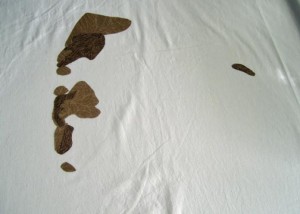
Although the light is hitting the front of her face, she is looking away from the camera — and there is no pinprick of light hitting her pupils. Even her mouth is closed.
But under her chin lies her hands, resting together. All of the primary light is hitting her top hand — so that is what you see develop first.
I spent some extra time on the wrinkles in the knuckles — just as I did with the wrinkles in the face. It’s the fine details that show age.
This is her without her hair — just her face and hands.
I have since added her hair — she has white scattered in her black hair — and a golden walking stick.
Her cloak is next. I’m still deciding what to do with that.

Finishing the Little Details
2I finished my latest piece, Celtic Woman, on Friday, just in time for the end of the month. I had it blocked and drying over the weekend — and thought I could take a quick picture of it today and be done with it and on to the next project.
I took a couple of rounds of pictures, and none of them were right. They were all a little blurry in the middle. I finally decided that the high contrast was causing a problem with the camera. I had a similar problem a few years ago with a piece I made called Ama. It is a very light portrait (my 1st person so judge me kindly) with a very dark background of blacks. The black has very intricate feather quilting using a heavy metallic red thread. I found that I could take a picture that focused on the portrait — and the picture blurred out all of the feather quilting details — or I could focus the camera on the black to get the quilting detail and the portrait would be blurry.
At that time, splicing two photographs together — which is what a professional photographer would do in the dark room and we can now do in Photoshop — was not considered an acceptable practice. Guidelines for the big shows were very explicit that you could not make any digital changes to the original shot — which made it a quilt that I couldn’t enter into a judged show. It also taught me a lot about the boundaries of a camera. I always expected the camera to see something just as I saw it with my eyes — and that is not always the case.
So when I realized that I had a similar problem with Celtic Woman, I started playing with the manual settings on my camera. I finally found that if I used spot metering instead of weighted average, the camera would give me a clear image of the face but underexpose the cloak. I could compensate for that in Photoshop, however, and that is how I finally got what I believe is a good representation of the quilt.
You can see a bigger picture of it and a detail shot on the website here.

Celtic Woman
4I lost my blog yesterday — an experience I don’t care to ever repeat. It was running really slow so I added a 5 star add-on called WP Tuner. After I activated it, I learned what the white screen of death is. It’s a little like the blue screen of death you see sometimes in Windows. It means that your blog has disappeared. No error messages — just nothing.
I can say that I learned a lot. I learned how to access phpMyAdmin on my hosting server and change settings in the raw code. I restored all of my database files from a backup, deactivated all of my plugins, and changed to the default theme. Still gone. I finally went back into my history files to find the WordPress page from which I had found WP Tuner — and although it had 5 stars, as I scrolled down, I found that it was considered “broken” in WP3.0. Reading on, I found some discussion that led me to the realization that this plugin had changed my wp_config.php file. I went back upstairs to my clunky PC that I keep just in case & looked at the php files on the server. There was a new wp_configPCTuner.php file (something like that) — so I erased it. There was no mention in the wp_config.php file — but the site still wasn’t working, so I uploaded the copy of the file that I had stored on the PC from my original install. Finally — it worked.
What a nasty plugin. I have to be much more careful in the future. It made me worry about putting the entire website in WP. I’ve loved WP & have wanted to move away from Dreamweaver — but Dreamweaver really saved me yesterday.
On to my original intent for posting . . .
I was scanning prints into my computer recently and found an extraordinary picture of my sister-in-law. It was taken at Christmas almost 10 years ago, and she had just received a beautiful black cloak. She has red flowing hair that is very striking against the black, and the picture of her taken in the side garden of our old house captures her personality in such a striking way.
This is the first value layer — not much to see — the white muslin that I use for a base with a few shapes in a light value.
This is the 2nd value layer — you begin to see a little more contour in her face. You’ve got her nose — her chin — suggestion of her cheeks.
Then the 3rd layer — now she really starts to come out.
This one shows the problem I was having with her eyes. She has light green eyes — but that would be lost in this picture of her. Too light and yellow on the left — too dark on the right.
This is her with her teeth and the eye color that I chose. The eyes look really strong up close — but make sense once all of the values are on the wall and you step back. The mouth was fun — this is the first time that I’ve shown the inside of the mouth — just a little peek.
Also eerie about this is that it is just the face — so at this point, knowing the family as well as I do, I can see other people in the family peeking out at me, not just my sister-in-law.
Her face is also shadowed in an interesting way. This will make more sense when the cloak is added around her face.
I started her hair with a very brash orange. The more I looked at her picture, the more I realized that I needed more of this color — and I ended up using this for value 1 & 2 in order to get enough of it. The darker colors are nice — but the bright orange is needed for the highlight. It will make more sense in a minute.
For her, a lot of the effect is the hair.
And then the cloak. The top of the cloak is the lightest as that is where the sun is hitting her. There is still a blank edge around the rim of the cloak. I had to figure out a clever way to show the braid on the edge.
I decided to use a black stripe cut on the bias that I could manually curve around her face. Most of the black stripes I found were black & white — too much contrast — but I found this homespun with black and neutral tan/taupe that seems to work fairly well. I cut it wider than what I needed — and then ironed it down as I curved it to fit the line I needed — but I just ironed it down a little on that one side. Then I went back and cut the opposite side to match the other line. I took artistic license in getting it where I wanted it to be.
In the end, I think you get that feeling of the rolled edge — and the neutral in the stripe doesn’t shout.
I also added a green background which I’ll show later. I’m working on the applique now.
